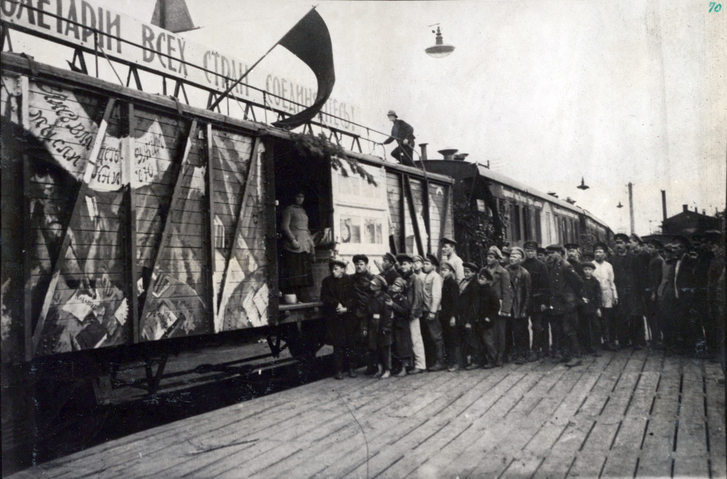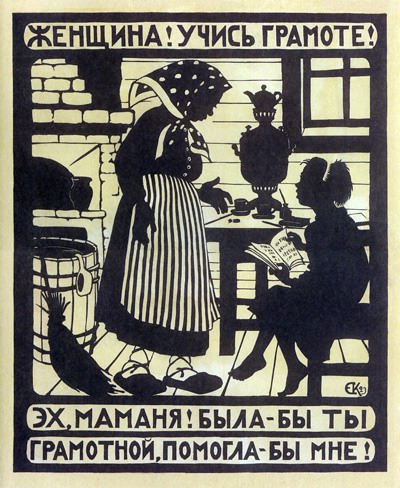Agitprop on:
[Wikipedia]
[Google]
[Amazon]
 Agitprop (; from ,
Agitprop (; from ,
 *Use of the press: Bolshevik strategy from the beginning was to gain access to the primary medium of dissemination of information in Russia: the press.Kenez, pp. 5–7 The socialist newspaper '' Pravda'' resurfaced in 1917 after being shut down by the Tsarist censorship three years earlier. Prominent Bolsheviks like Kamenev, Stalin and Bukharin became editors of ''Pravda'' during and after the revolution, making it an organ for
*Use of the press: Bolshevik strategy from the beginning was to gain access to the primary medium of dissemination of information in Russia: the press.Kenez, pp. 5–7 The socialist newspaper '' Pravda'' resurfaced in 1917 after being shut down by the Tsarist censorship three years earlier. Prominent Bolsheviks like Kamenev, Stalin and Bukharin became editors of ''Pravda'' during and after the revolution, making it an organ for  *Oral-agitation networks: The
*Oral-agitation networks: The
"Agitprop"
in: James Millar, ''Encyclopedia of Russian History'', Gale Group, Inc., 2003. . {{Authority control Propaganda in the Soviet Union Political art
 Agitprop (; from ,
Agitprop (; from , portmanteau
In linguistics, a blend—also known as a blend word, lexical blend, or portmanteau—is a word formed by combining the meanings, and parts of the sounds, of two or more words together.
of ''agitatsiya'', "agitation" and ''propaganda'', "propaganda
Propaganda is communication that is primarily used to influence or persuade an audience to further an agenda, which may not be objective and may be selectively presenting facts to encourage a particular synthesis or perception, or using loaded l ...
") refers to an intentional, vigorous promulgation of ideas. The term originated in the Soviet Union
The Union of Soviet Socialist Republics. (USSR), commonly known as the Soviet Union, was a List of former transcontinental countries#Since 1700, transcontinental country that spanned much of Eurasia from 1922 until Dissolution of the Soviet ...
where it referred to popular media, such as literature, plays, pamphlets, films, and other art forms, with an explicitly political message in favor of communism
Communism () is a political sociology, sociopolitical, political philosophy, philosophical, and economic ideology, economic ideology within the history of socialism, socialist movement, whose goal is the creation of a communist society, a ...
.
The term originated in the Soviet Union as a shortened name for the Department for Agitation and Propaganda (, '), which was part of the central and regional committees of the Communist Party of the Soviet Union
The Communist Party of the Soviet Union (CPSU),. Abbreviated in Russian as КПСС, ''KPSS''. at some points known as the Russian Communist Party (RCP), All-Union Communist Party and Bolshevik Party, and sometimes referred to as the Soviet ...
. Within the party apparatus, both agitation (work among people who were not Communists) and propaganda (political work among party members) were the responsibility of the ''agitpropotdel'', or APPO. Its head was a member of the MK secretariat, although they ranked second to the head of the ''orgraspredotdel''. Typically Russian agitprop explained the ideology and policies of the Communist Party and attempted to persuade the general public to support and join the party and share its ideals. Agitprop was also used for dissemination of information and knowledge to the people, like new methods of agriculture. After the October Revolution
The October Revolution, also known as the Great October Socialist Revolution (in Historiography in the Soviet Union, Soviet historiography), October coup, Bolshevik coup, or Bolshevik revolution, was the second of Russian Revolution, two r ...
of 1917, an agitprop train toured the country, with artists and actors performing simple plays and broadcasting propaganda. It had a printing press on board the train to allow posters to be reproduced and thrown out of the windows as it passed through villages. The first head of the Propaganda and Agitation Department of the Central Committee of the Communist Party (b) was Evgeny Preobrazhensky.
It gave rise to agitprop theatre, a highly politicized theatre that originated in 1920s Europe and spread to the United States; the plays of Bertolt Brecht are a notable example. Russian agitprop theater was noted for its cardboard characters of perfect virtue and complete evil, and its coarse ridicule. Gradually, the term ''agitprop'' came to describe any kind of highly politicized art.
Forms
During theRussian Civil War
The Russian Civil War () was a multi-party civil war in the former Russian Empire sparked by the 1917 overthrowing of the Russian Provisional Government in the October Revolution, as many factions vied to determine Russia's political future. I ...
agitprop took various forms:
 *Use of the press: Bolshevik strategy from the beginning was to gain access to the primary medium of dissemination of information in Russia: the press.Kenez, pp. 5–7 The socialist newspaper '' Pravda'' resurfaced in 1917 after being shut down by the Tsarist censorship three years earlier. Prominent Bolsheviks like Kamenev, Stalin and Bukharin became editors of ''Pravda'' during and after the revolution, making it an organ for
*Use of the press: Bolshevik strategy from the beginning was to gain access to the primary medium of dissemination of information in Russia: the press.Kenez, pp. 5–7 The socialist newspaper '' Pravda'' resurfaced in 1917 after being shut down by the Tsarist censorship three years earlier. Prominent Bolsheviks like Kamenev, Stalin and Bukharin became editors of ''Pravda'' during and after the revolution, making it an organ for Bolshevik
The Bolsheviks, led by Vladimir Lenin, were a radical Faction (political), faction of the Marxist Russian Social Democratic Labour Party (RSDLP) which split with the Mensheviks at the 2nd Congress of the Russian Social Democratic Labour Party, ...
agitprop. With the decrease in popularity and power of Tsarist and Bourgeois press outlets, ''Pravda'' was able to become the dominant source of written information for the population in regions controlled by the Red Army .Kenez, pp. 29-31
 *Oral-agitation networks: The
*Oral-agitation networks: The Bolshevik
The Bolsheviks, led by Vladimir Lenin, were a radical Faction (political), faction of the Marxist Russian Social Democratic Labour Party (RSDLP) which split with the Mensheviks at the 2nd Congress of the Russian Social Democratic Labour Party, ...
leadership understood that to build a lasting regime, they would need to win the support of the mass population of Russian peasants. To do this, Lenin organized a Communist party that attracted demobilized soldiers and others to become supporters of the Bolshevik ideology, dressed up in uniforms and sent to travel the countryside as agitators to the peasants.Kenez, pp. 51-53 The oral-agitation networks established a presence in the isolated rural areas of Russia, expanding Communist power.
* Agitational trains and ships: To expand the reach of the oral-agitation networks, the Bolsheviks pioneered using modern transportation to reach deeper into Russia. The trains and ships carried agitators armed with leaflets, posters, and various other forms of agitprop. Train cars included a garage of motorcycles and cars in order for propaganda materials to reach the rural towns not located near rail lines. The agitational trains expanded the reach of agitators into Eastern Europe and allowed for the establishment of agitprop stations, consisting of libraries of propaganda material. The trains were also equipped with radios, and their own printing press, so they could report to Moscow the political climate of the given region, and receive instruction on how to custom print propaganda on the spot to better take advantage of the situation.Kenez, p. 59.
*Literacy campaign: The peasant society of Russia in 1917 was largely illiterate, making it difficult to reach them through printed agitprop. The People's Commissariat of Enlightenment was established to spearhead the war on illiteracy.Kenez, p. 74 Instructors were trained in 1919 and sent to the countryside to create more instructors and expand the operation into a network of literacy centers. New textbooks were created, explaining Bolshevik ideology to the newly literate members of Soviet society, and the literacy training in the army was expanded.Kenez, pp. 77-78
See also
* Agit-train * Blue Blouse * Propaganda in the Soviet Union * Left Column (theater troupe) * Russian Telegraph Agency (ROSTA)References
Sources
* * * * * * * * * *Further reading
*Martin Ebon, ''The Soviet Propaganda Machine'', McGraw-Hill, 1987. . *Charlotte Fiell and Peter Fiell, ''Design of the 20th Century'', Cologne: Taschen, 2005, p. 26. . *Vellikkeel Raghavan, ''Agitation Propaganda Theatre'', Chandigarh: Unistar Books, 2009. . *K. A. Rusnock"Agitprop"
in: James Millar, ''Encyclopedia of Russian History'', Gale Group, Inc., 2003. . {{Authority control Propaganda in the Soviet Union Political art